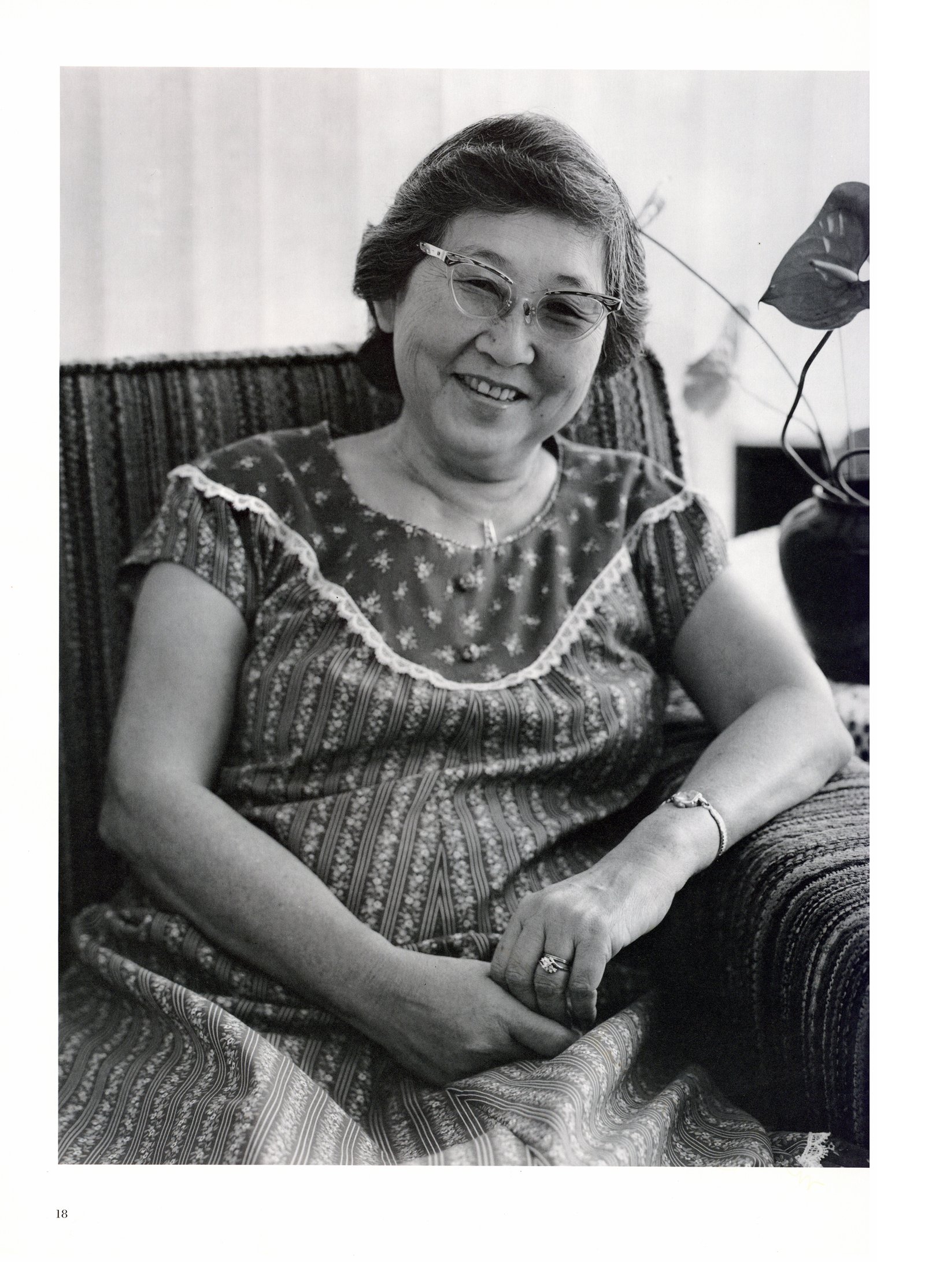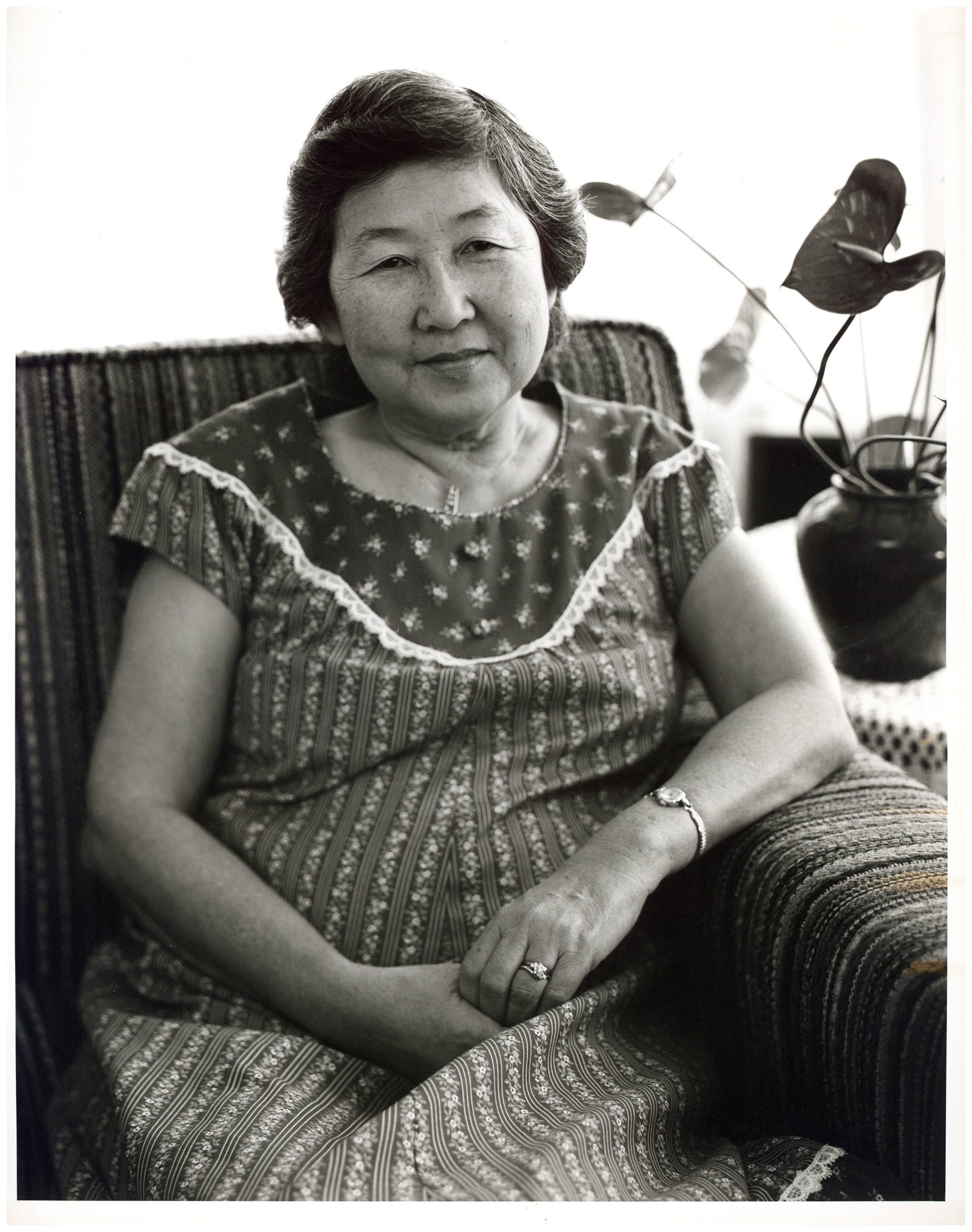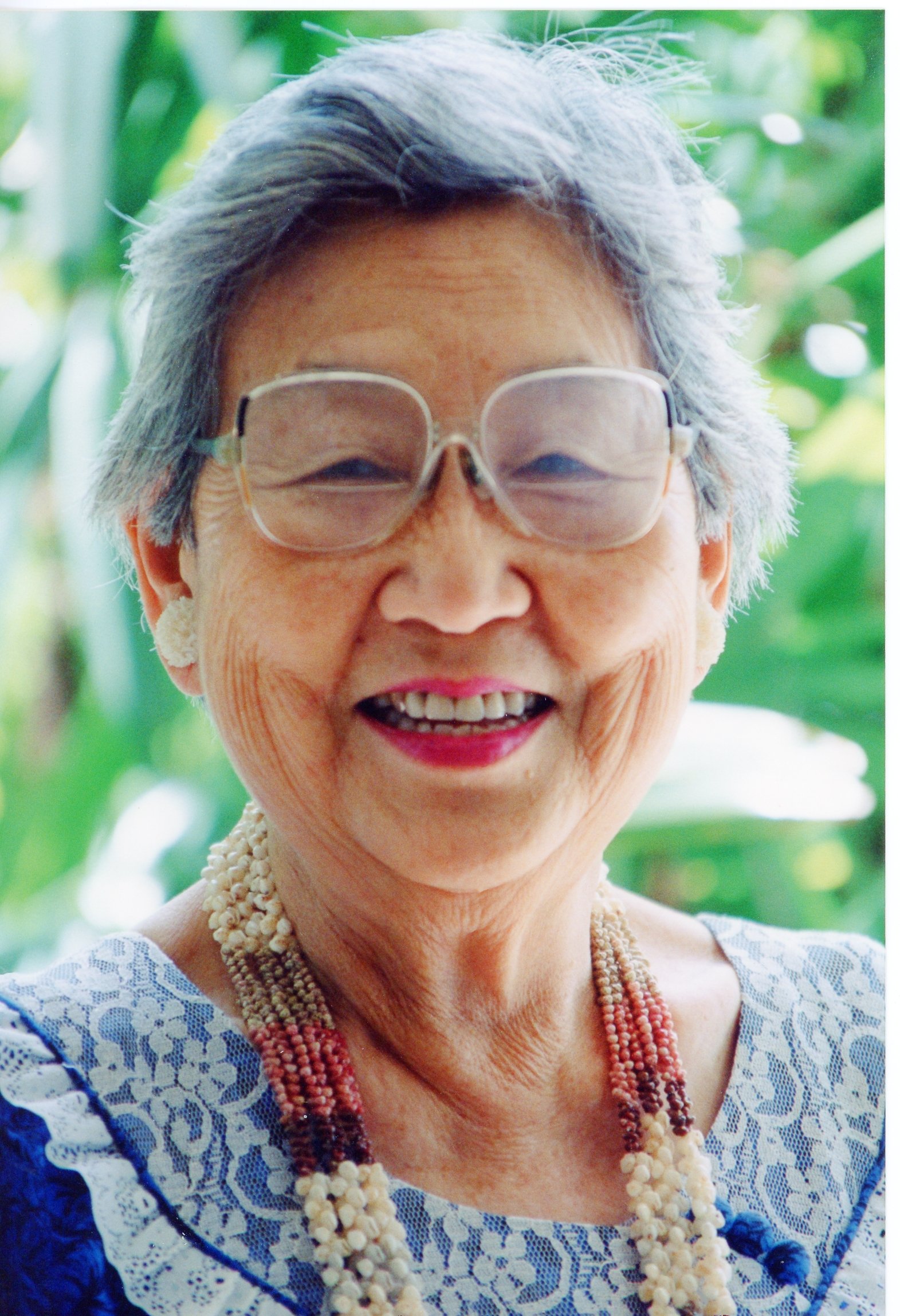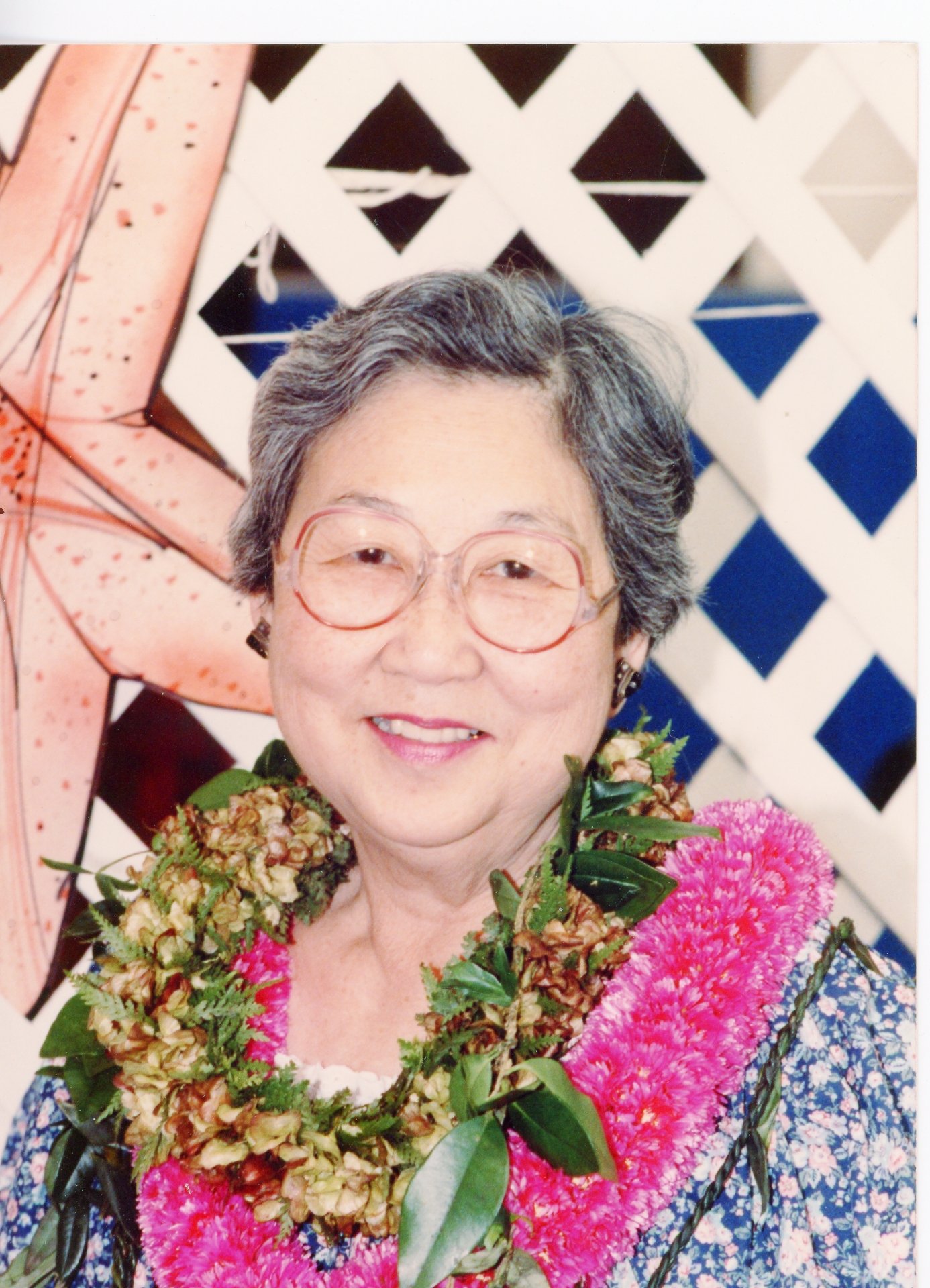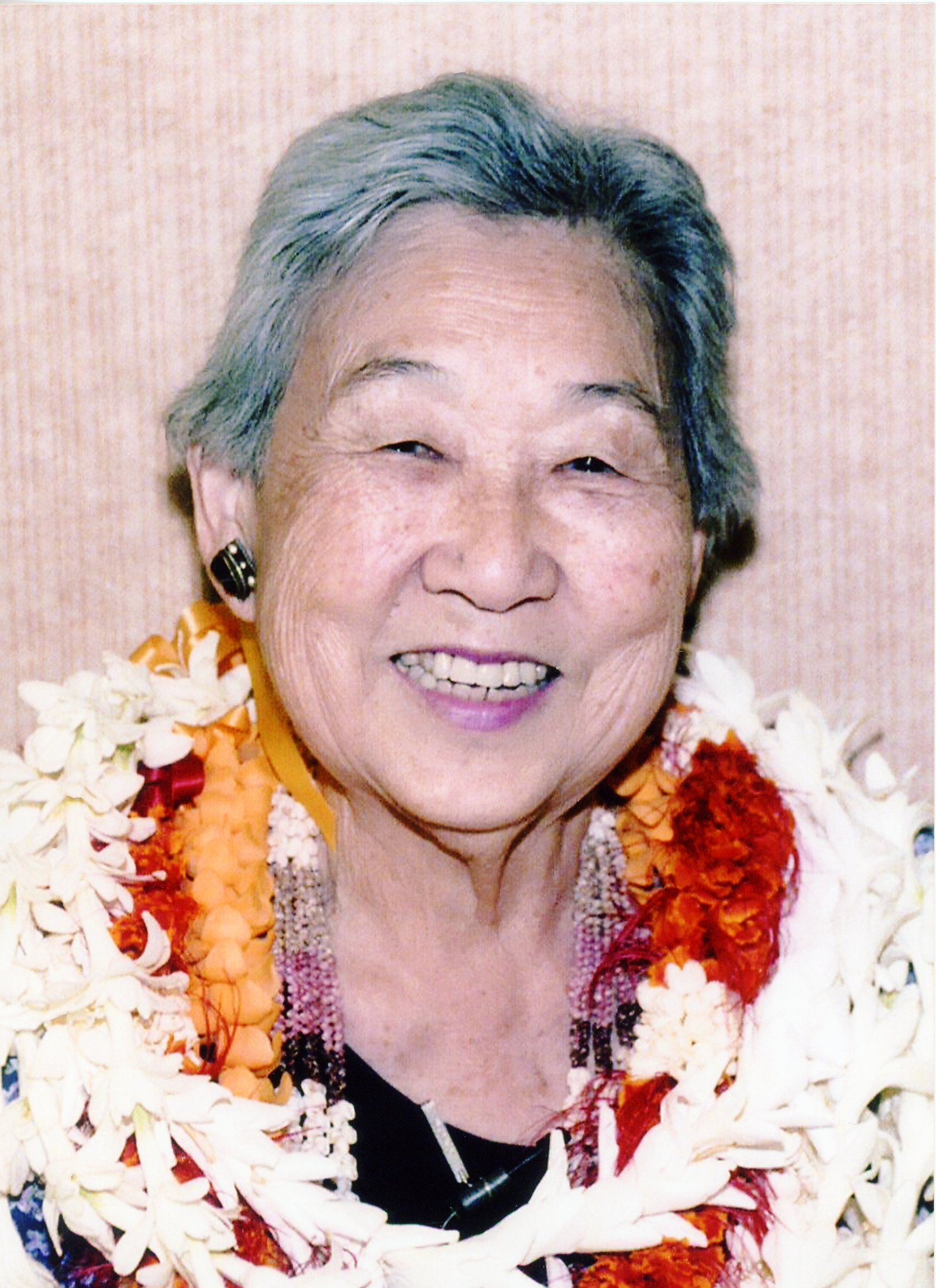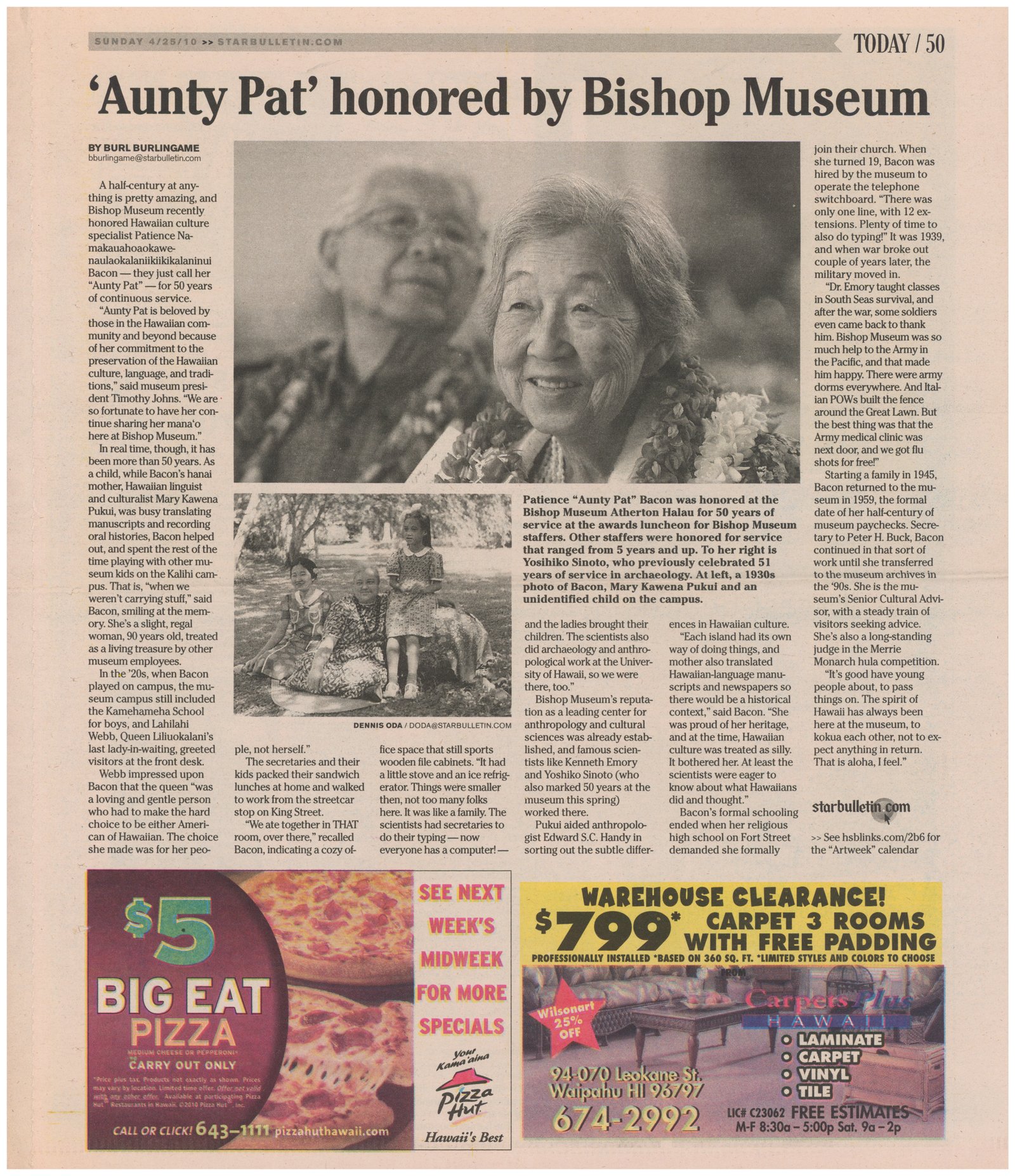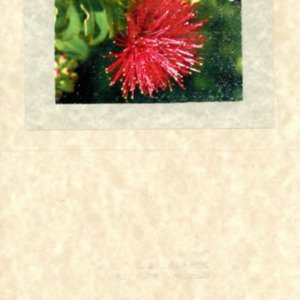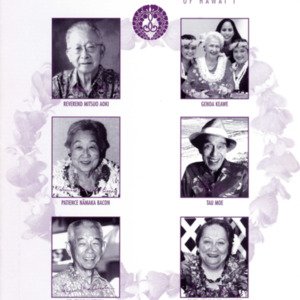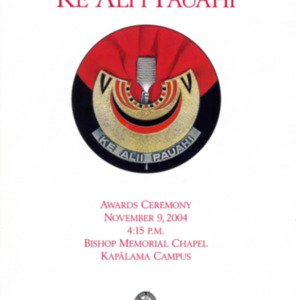Pat Nāmaka Bacon
Title
Pat Nāmaka Bacon
Description
Patience Elmay Namakauahoaokawenaulaokalaniikiikikalaninui Wiggin Bacon
Pat Bacon, born in Waimea, Kaua‘i, was adopted at birth in the hānai tradition of the Hawaiians by Mary Kawena Pūkuʻi
Some of the people today would find the kahiko of my day dull because today’s kahiko is performed with much more vim and vigor. I think today’s ancient hula is aimed at the visitor because if you don’t understand the language, you won’t understand the kaona of the mele. The emphasis in the traditional hula was on the poetry of the language and you have to understand the language if you are going to appreciate the poetry. The changes in kahiko have come about because you have to keep the audience interested.
I was thirteen when I studied with Keahi Luahine. Kawena’s grandmother had been a court dancer for Queen Emma so informally there were always aunties teaching us. My mother trained us in the dances handed down through the family but it was under Keahi that I began my formal training in the hula. Keahi taught us the pig dance, the hula ki‘i, the hula pahu, the kālaʻau with the papa hehi, and dances that were strictly from Kaua‘i.
After a year I went on to Keahi’s cousin Kapua, who I trained under for another year. Kapua spoke very little and only showed us the dance once so we would have to absorb as much as we could. This was just before the war and we would go once a week and dance without a break from six p.m. to eight p.m. Back in those days you didn’t question the kumu, instead they questioned you. It was an era where children were seen and not heard. At eight o’clock the siren atop Aloha Tower would sound signaling the curfew and we would pick up our things and hurry home.
When I turned fifteen I trained under Joseph ʻĪlālāʻole with whom I stayed for the next three years. From Īlālāʻole I learned dances with a faster tempo and greater foot movement. In those days many of the teachers carried a long rod of bamboo and if you made a sloppy motion you got a little sting on your ankles. Every teacher in those days was strict and if they didn’t feel you were ready to progress you just stayed put.
I went through two traditional graduations with ‘Īlālāʻole. The first night of the graduation would be a pā‘ina involving only dancers and the ho‘opa‘a. The second night would be a hō‘ike where all the parents and friends would be invited.
When I teach someone it’s important that they adhere to what they have been taught. My elders always stressed that ancient hula, the chants, and dances passed down from generation to generation, should be taught as it was learned. I find it discouraging because there have been occasions where I have taught a traditional dance and later found it unrecognizable because of changes by my students.
Pat Bacon, born in Waimea, Kaua‘i, was adopted at birth in the hānai tradition of the Hawaiians by Mary Kawena Pūkuʻi
Some of the people today would find the kahiko of my day dull because today’s kahiko is performed with much more vim and vigor. I think today’s ancient hula is aimed at the visitor because if you don’t understand the language, you won’t understand the kaona of the mele. The emphasis in the traditional hula was on the poetry of the language and you have to understand the language if you are going to appreciate the poetry. The changes in kahiko have come about because you have to keep the audience interested.
I was thirteen when I studied with Keahi Luahine. Kawena’s grandmother had been a court dancer for Queen Emma so informally there were always aunties teaching us. My mother trained us in the dances handed down through the family but it was under Keahi that I began my formal training in the hula. Keahi taught us the pig dance, the hula ki‘i, the hula pahu, the kālaʻau with the papa hehi, and dances that were strictly from Kaua‘i.
After a year I went on to Keahi’s cousin Kapua, who I trained under for another year. Kapua spoke very little and only showed us the dance once so we would have to absorb as much as we could. This was just before the war and we would go once a week and dance without a break from six p.m. to eight p.m. Back in those days you didn’t question the kumu, instead they questioned you. It was an era where children were seen and not heard. At eight o’clock the siren atop Aloha Tower would sound signaling the curfew and we would pick up our things and hurry home.
When I turned fifteen I trained under Joseph ʻĪlālāʻole with whom I stayed for the next three years. From Īlālāʻole I learned dances with a faster tempo and greater foot movement. In those days many of the teachers carried a long rod of bamboo and if you made a sloppy motion you got a little sting on your ankles. Every teacher in those days was strict and if they didn’t feel you were ready to progress you just stayed put.
I went through two traditional graduations with ‘Īlālāʻole. The first night of the graduation would be a pā‘ina involving only dancers and the ho‘opa‘a. The second night would be a hō‘ike where all the parents and friends would be invited.
When I teach someone it’s important that they adhere to what they have been taught. My elders always stressed that ancient hula, the chants, and dances passed down from generation to generation, should be taught as it was learned. I find it discouraging because there have been occasions where I have taught a traditional dance and later found it unrecognizable because of changes by my students.
Birth Date
February 10, 1920
Birthplace
Waimea, Kaua‘i
Death Date
January 23, 2021
Hula Training/
Competitions
Mary Kawena Pukui
Joseph ‘Ilala’ole
Keahi Luahine
Joseph ‘Ilala’ole
Keahi Luahine
Citation
“Pat Nāmaka Bacon,” Nā Kumu Hula Archive, accessed September 16, 2025, https://nakumuhula.org/archive/items/show/25.
